Prostaglandins
Products for Prostaglandins
- Cat.No. Product Name Information
-
GC18814
CAY10580
Prostaglandin E2 (PGE2) activates four E prostanoid (EP) receptors, EP1-4.
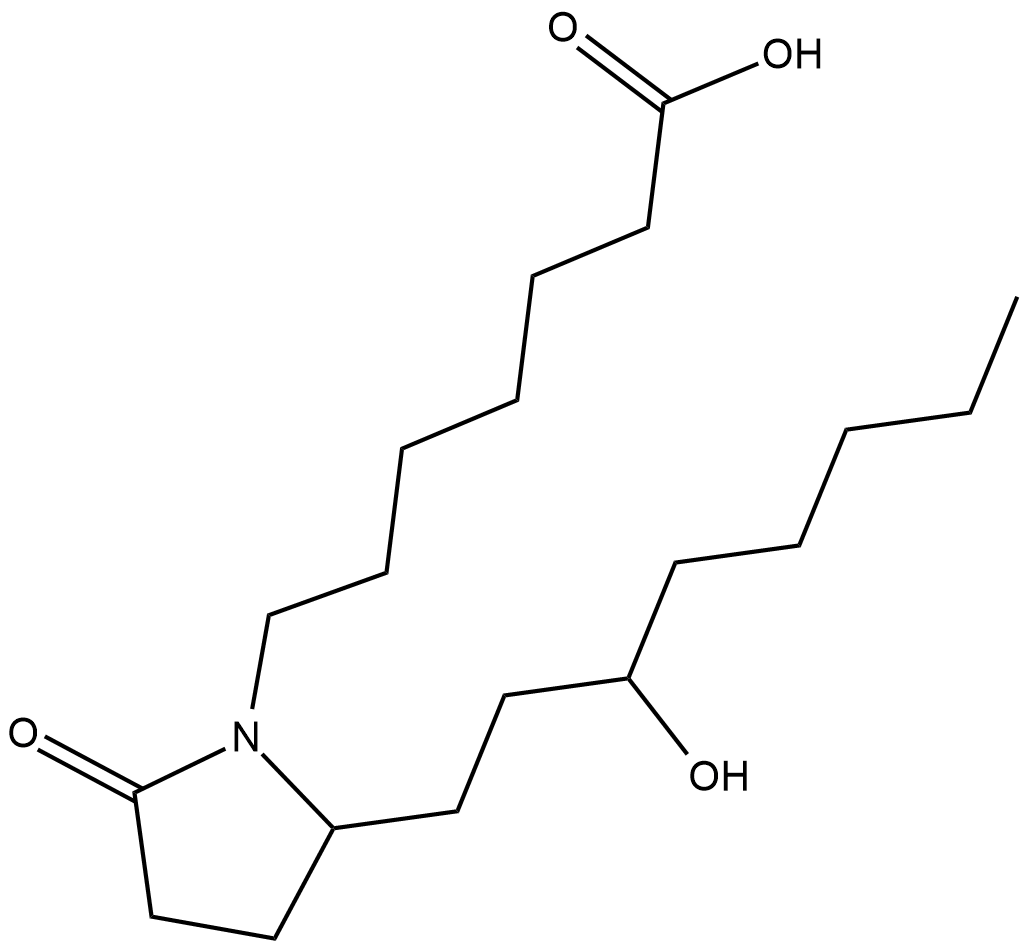
-
GC18688
CAY10589
Microsomal Prostaglandin E2 Synthase-1 (mPGES-1), with cyclooxygenase-2 (COX-2), synthesizes PGE2, which is directly involved in signaling during inflammation, fever and pain.
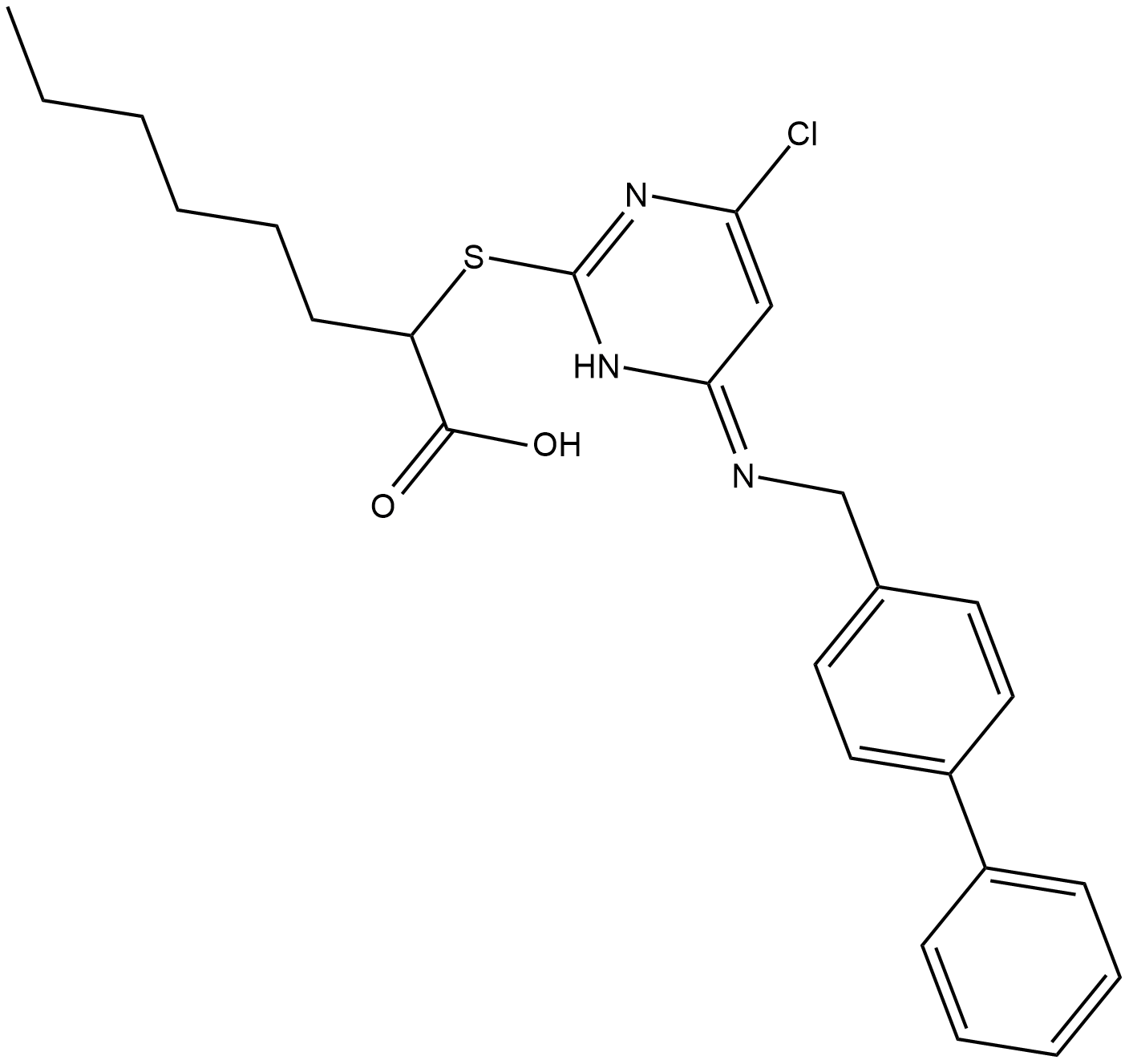
-
GC18710
CAY10700
Prostaglandin E2 is the major PG synthesized at sites of inflammation and plays an important role in different inflammatory diseases.
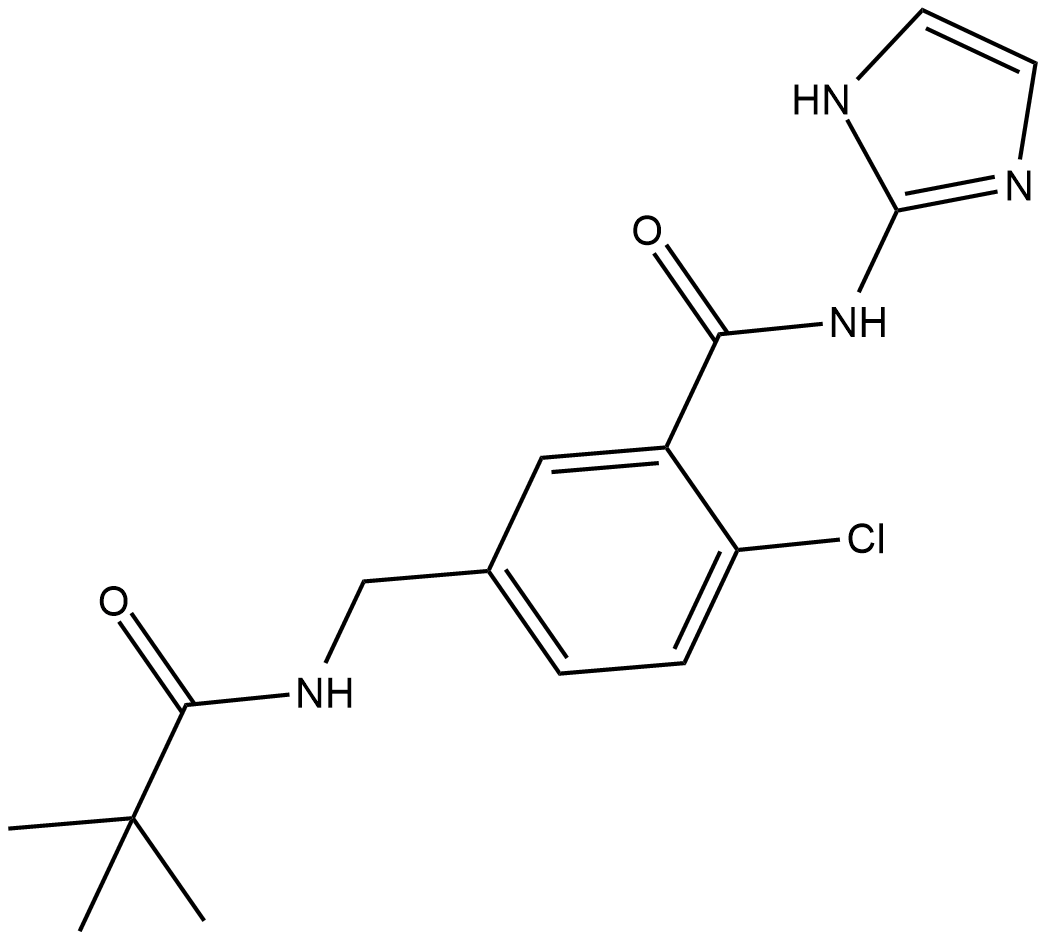
-
GC49152
Celecoxib Carboxylic Acid
An inactive metabolite of celecoxib

-
GC43225
Celecoxib Carboxylic Acid Acyl-β-D-Glucuronide
Celecoxib carboxylic acid acyl-β-D-glucuronide is a phase II metabolite of celecoxib.

-
GC47070
Celecoxib-d7
An internal standard for the quantification of celecoxib

-
GC45716
Cerevisterol
A fungal metabolite

-
GC41222
Cicaprost
Prostaglandin I2 (PGI2, prostacyclin) is the most potent endogenous vasodilator that affects both the systemic and pulmonary circulation.

-
GC43270
Ciprostene (calcium salt)
Ciprostene is the 9β-methyl analog of carbaprostacyclin and a stable analog of PGI2.

-
GC45614
Cryogenine
An alkaloid with anti-inflammatory activity

-
GC43444
Diclofenac Acyl-β-D-Glucuronide
Diclofenac acyl-β-D-glucuronide is an active metabolite of diclofenac and the predominant metabolite in rat.

-
GC43445
Diclofenac Acyl-β-D-Glucuronide allyl ester
Diclofenac acyl-β-D-glucuronide allyl ester is an intermediate in the synthesis of the COX inhibitor metabolite diclofenac acyl-β-D-glucuronide .

-
GC47212
Diclofenac amide
A prodrug form of diclofenac

-
GC43447
Diclofenac methyl ester
Diclofenac methyl ester is a hydrophobic prodrug form of the non-steroidal anti-inflammatory drug (NSAID) diclofenac.

-
GC47213
Diclofenac-d4
An internal standard for the quantification of diclofenac

-
GC47287
Eltenac
A non-selective COX inhibitor

-
GC52516
Erbstatin
A tyrosine kinase inhibitor

-
GC49156
Etodolac Acyl Glucuronide
A phase II metabolite of etodolac

-
GC47323
Etofenamate-d4
An internal standard for the quantification of etofenamate

-
GC40565
Feprazone
Feprazone is a non-steroidal anti-inflammatory drug (NSAID) and COX inhibitor that is 10-fold selective for COX-2 over COX-1.

-
GC49344
Fisetin-d5
An internal standard for the quantification of fisetin

-
GC48827
Flufenamic Acid-d4
An internal standard for the quantification of flufenamic acid

-
GC49747
Flunixin-d3
An internal standard for the quantification of flunixin

-
GC43691
Fluprostenol methyl amide
Fluprostenol is an F-series prostaglandin analog which has been approved for many years as a luteolytic in veterinary animals.

-
GC43692
Fluprostenol methyl ester
Fluprostenol is an F-series prostaglandin analog which has been approved for many years as a luteolytic in veterinary animals.

-
GC43693
Fluprostenol serinol amide
2-arachidonyl glycerol (2-AG) exhibits cannabinoid (CB) agonist activity at the CB1 receptor, is an important endogenous monoglyceride species, and is thus considered to be the natural ligand for the CB1 receptor.

-
GC47366
Flurbiprofen-d3
An internal standard for the quantification of flurbiprofen

-
GC52315
GK241
An sPLA2 (Type IIA) inhibitor

-
GC49882
Hemokinin 1 (human) (trifluoroacetate salt)
A peptide agonist of NK1 receptors

-
GC40814
Heneicosapentaenoic Acid methyl ester
Heneicosapentaenoic Acid (HPA) is a fatty acid present in trace amounts in the green algae Bryopsis pennata Lamouroux and in fish oils.

-
GC48897
Homocarnosine
Homocarnosine is a dipeptide of γ-aminobutyric acid (GABA) and histidine unique to brain.

-
GC49130
Hydroxy Celecoxib
An inactive metabolite of celecoxib

-
GC47456
Indole-3-pyruvic Acid
Indole-3-pyruvic Acid, a keto analogue of tryptophan, is an orally active AHR agonist.

-
GC49698
Indomethacin Acyl Glucuronide
A metabolite of indomethacin

-
GC47528
Ketorolac (calcium salt)
Ketorolac (RS37619) hemicalcium is a non-steroidal anti-inflammatory drug (NSAID), acting as a nonselective COX inhibitor, with IC50s of 20 nM for COX-1 and 120 nM for COX-2.

-
GC45491
KT172

-
GC49471
LAMP1 Monoclonal Antibody (Clone Ly1C6)
For immunochemical analysis of LAMP1

-
GC44035
LAS191859
LAS191859 is a potent antagonist of CRTH2/DP2 with IC50 values of 9.58, 14, 15.5, and 7.6 nM for recombinant human, rat, mouse, and guinea pig CRTH2/DP2 receptors, respectively.

-
GC47540
Latanoprost amide
A derivative of latanoprost

-
GC47541
Latanoprost dimethyl amide
A derivative of latanoprost

-
GC44037
Latanoprost ethyl amide
Latanoprost ethyl amide (Lat-NEt) is a latanoprost analog in which the C-1 carboxyl group has been modified to an N-ethyl amide.
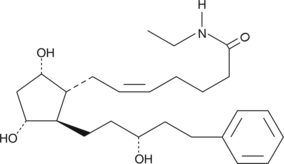
-
GC47552
Leflunomide-d4
An internal standard for the quantification of leflunomide

-
GC41517
Linoleic Acid ethyl ester
Linoleic Acid ethyl ester inhibit the development of atherosclerotic lesions and the expression of inflammatory mediators.

-
GC48639
Lornoxicam-d4
An internal standard for the quantification of lornoxicam

-
GC44092
Lumula
There are currently four prostaglandin (PG) derivatives which have been approved for human clinical use for the treatment of glaucoma.
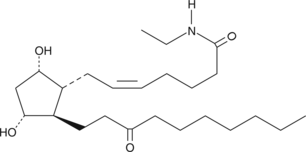
-
GC41595
Matairesinol
Diets high in fiber contain plant lignan species that may be directly responsible for some observed health benefits of these diets.

-
GC44140
MCTR3
Maresin conjugates in tissue regeneration 3 (MCTR3) is a specialized pro-resolving mediator (SPM) synthesized from docosahexaenoic acid in macrophages.

-
GC48907
Metaxalone-d6
An internal standard for the quantification of metaxalone

-
GC44191
MHY908
MHY908 is a dual agonist of peroxisome proliferator-activated receptor α (PPARα) and PPARγ that increases transcriptional activity of PPARα and PPARγ in a luciferase reporter assay in AC2F rat liver cells when used at a concentration of 5 μM.

-
GC44433
Nocloprost
Nocloprost is a stable prostaglandin E2 analog with gastroprotective and ulcer-healing properties.

-
GC49316
O-Desmethyl-N-deschlorobenzoyl Indomethacin
A metabolite of indomethacin

-
GC47823
Oleyl Alcohol
A monounsaturated fatty alcohol

-
GC49054
Oxaprozin-d5
An internal standard for the quantification of oxaprozin

-
GC44579
PCTR1
Protectin conjugates in tissue regeneration 1 (PCTR1) is a specialized pro-resolving mediator (SPM) synthesized from docosahexaenoic acid.

-
GC44614
PGDM
Prostaglandin D2 (PGD2) plays a pharmacological role in allergic and asthmatic anaphylaxis, normal physiological sleep and lowering of body temperature, as well as inhibits platelet aggregation and relaxes vascular smooth muscle.

-
GC49128
Phenylbutazone-d9
An internal standard for the quantification of phenylbutazone

-
GC18271
Polmacoxib
Polmacoxib is an inhibitor of cyclooxygenase 2 (COX-2) and the carbonic anhydrase subtypes I (CAI) and CAII.
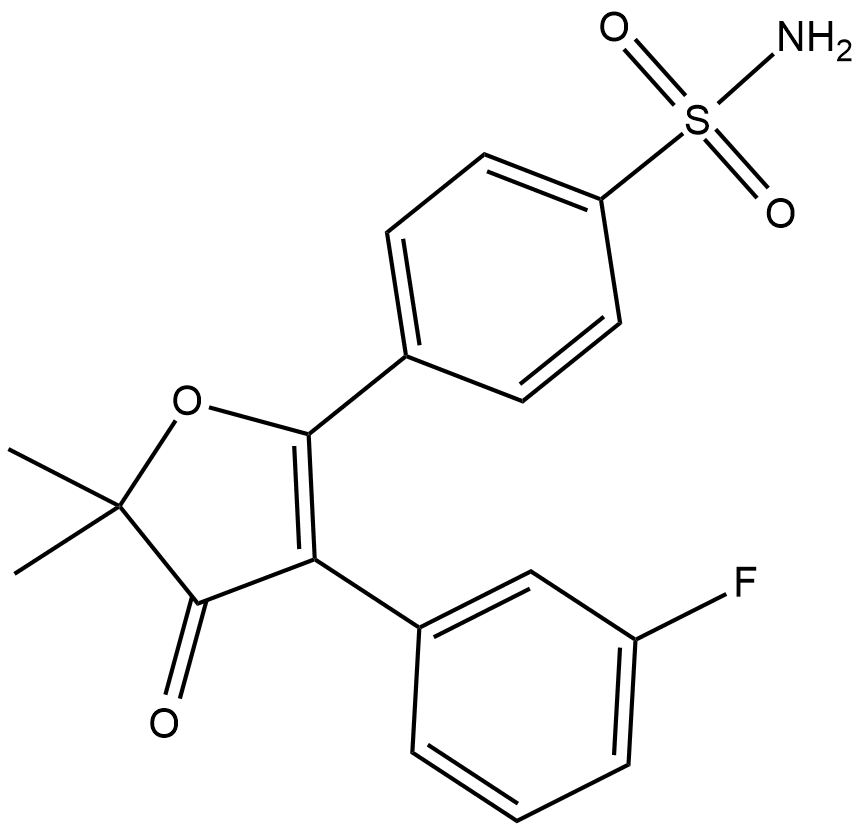
-
GC52270
Pranoprofen-13C-d3
An internal standard for the quantification of pranoprofen

-
GC18310
Prostaglandin A1
Prostaglandin A1 (PGA1) was first isolated as a dehydration product of the PGE1 compounds found in human semen.
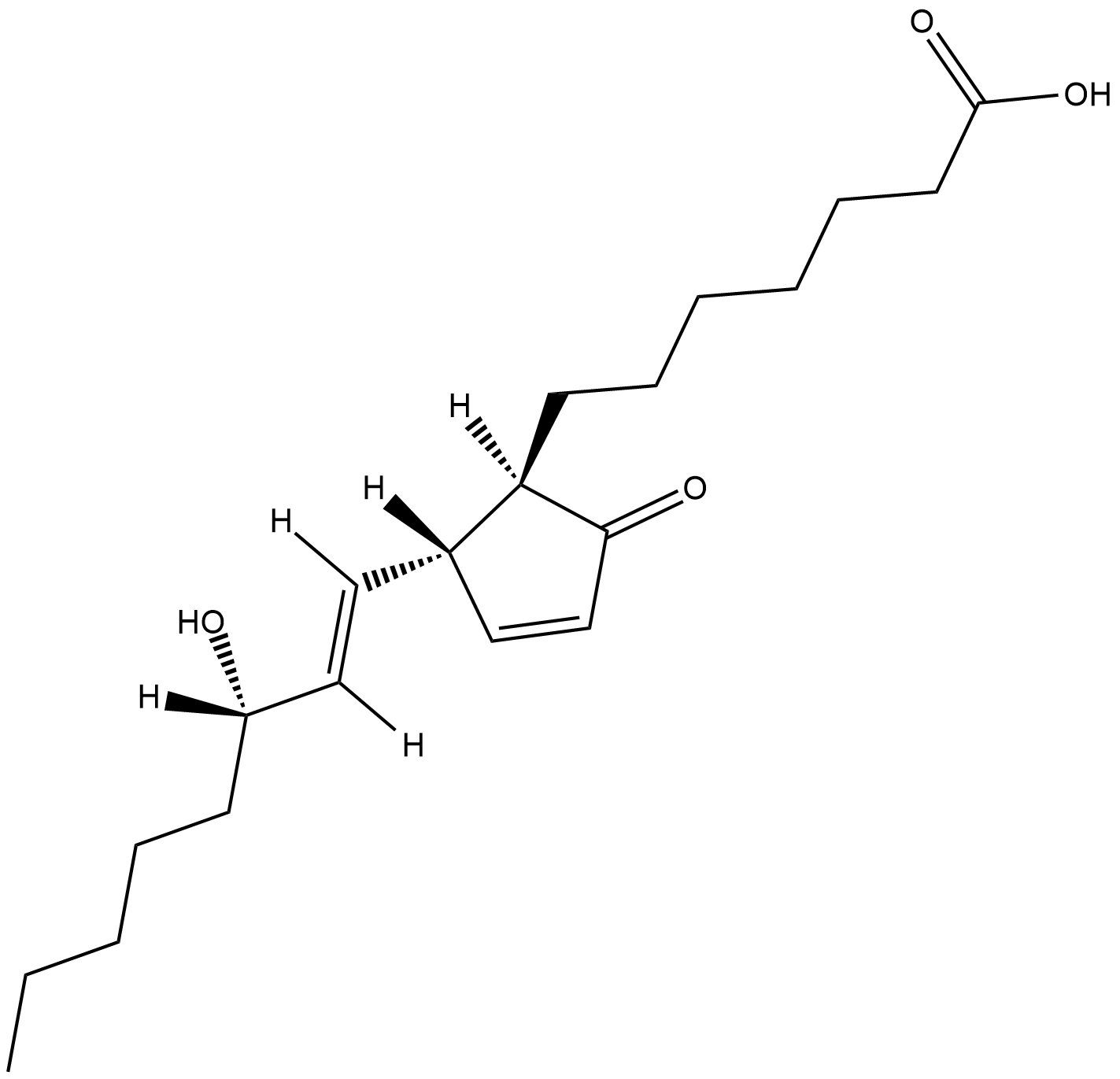
-
GC18855
Prostaglandin A1 ethyl ester
Prostaglandin A1 (PGA1) ethyl ester is a prodrug form of PGA1 with enhanced lipid solubility.
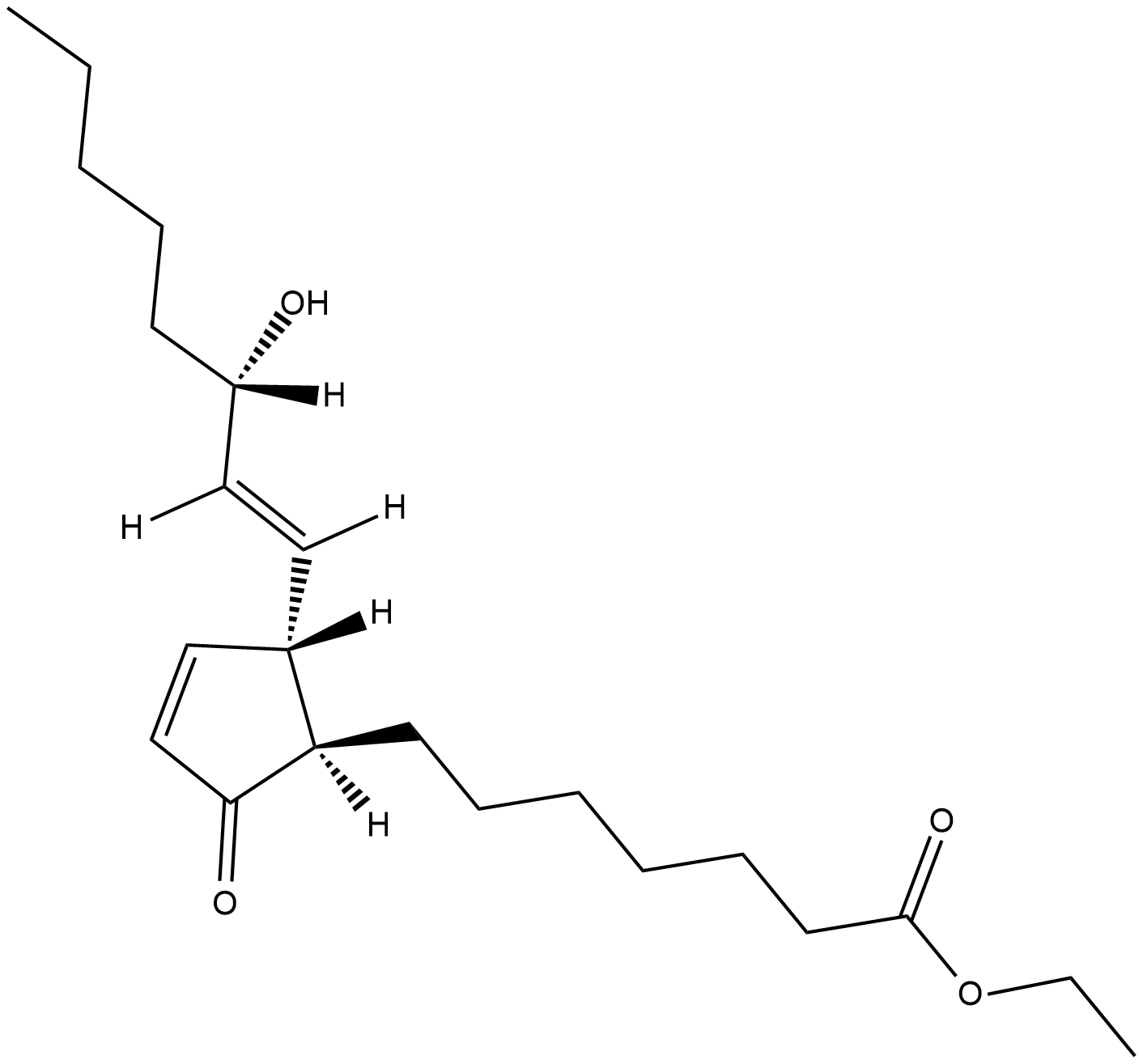
-
GC40340
Prostaglandin A1 methyl ester
Prostaglandin A1 (PGA1) has been shown to cause renal vasodilation, increase urine sodium excretion, and lowers arterial pressure in hypertensive patients.

-
GC18353
Prostaglandin A2
A naturally occurring prostaglandin with antiviral/antitumor activity
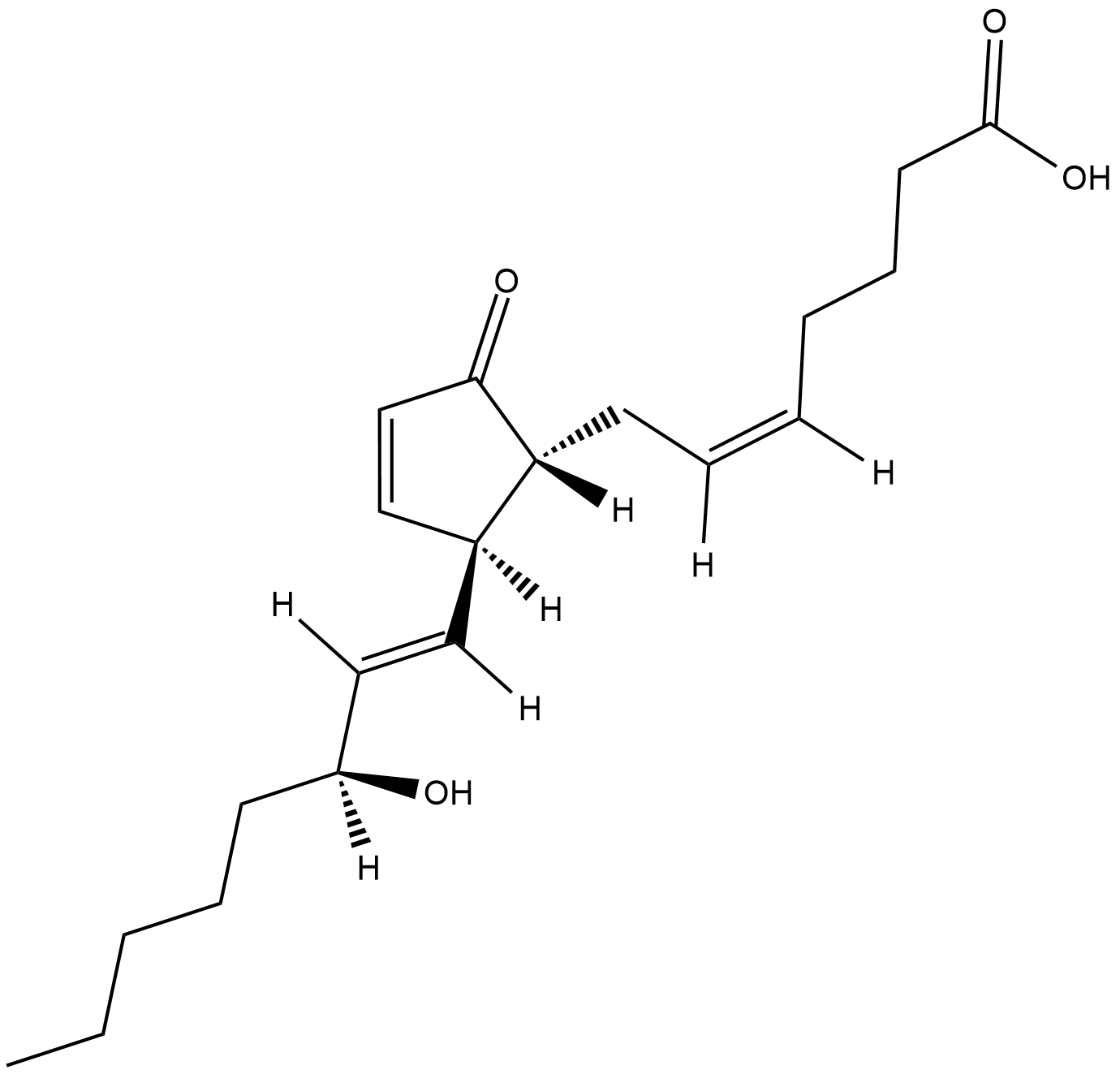
-
GC44704
Prostaglandin A2 methyl ester
Prostaglandin A2 (PGA2) is a naturally occurring PG in gorgonian corals where it may function in self defense.

-
GC40765
Prostaglandin A3
Cyclooxygenase metabolism of EPA to produce Prostaglandin E3 (PGE3) has been reported in biosynthetic preparations of ovine seminal vesicles and in the ocular tissues of primates.
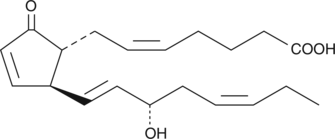
-
GC18250
Prostaglandin B1
Prostaglandin B1 (PGB1) is a non-enzymatic dehydration product of PGE1 resulting from treatment with strong base.
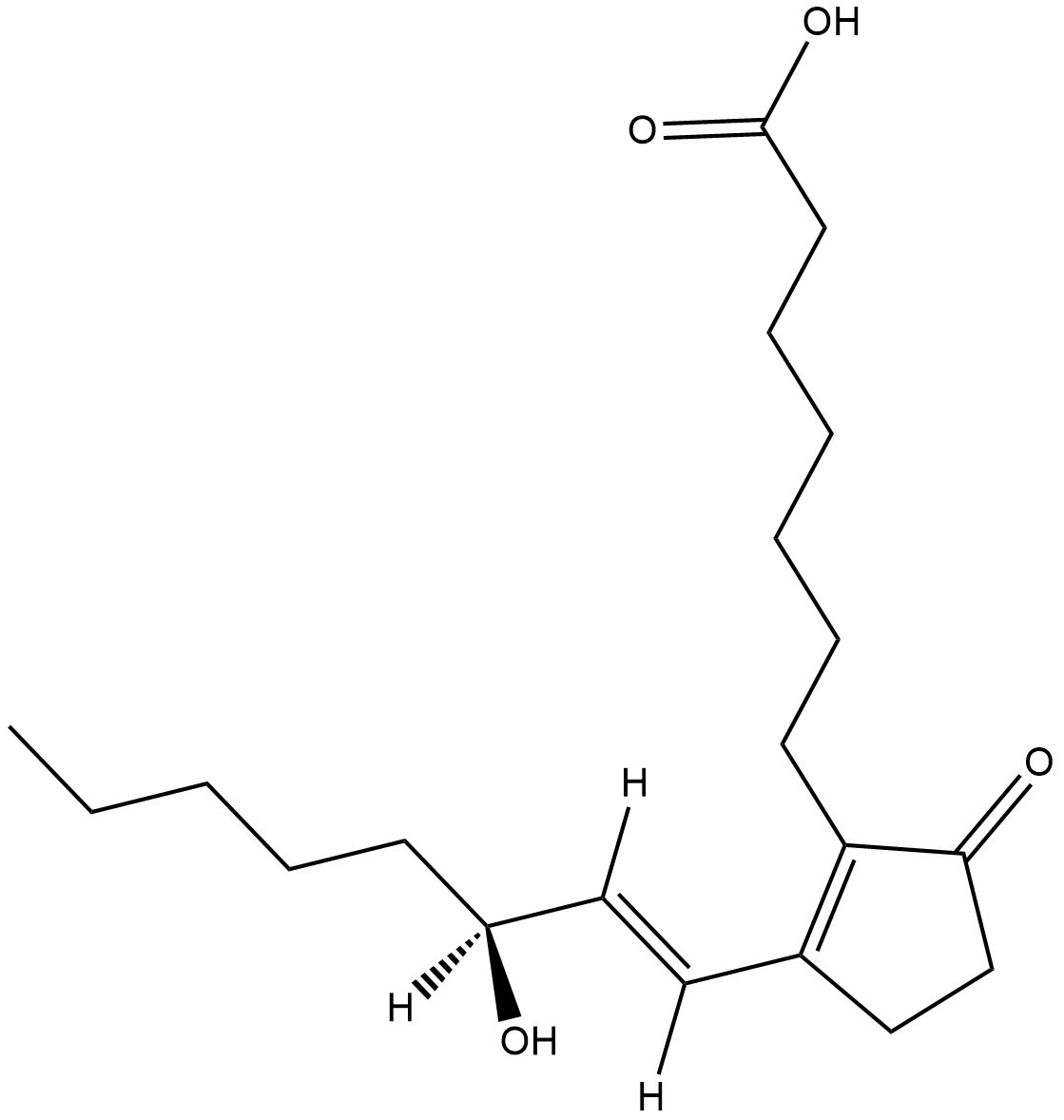
-
GC18411
Prostaglandin B2
Prostaglandin B2 (PGB2) is a non-enzymatic dehydration product resulting from the treatment of PGE2 or PGA2 with strong base.
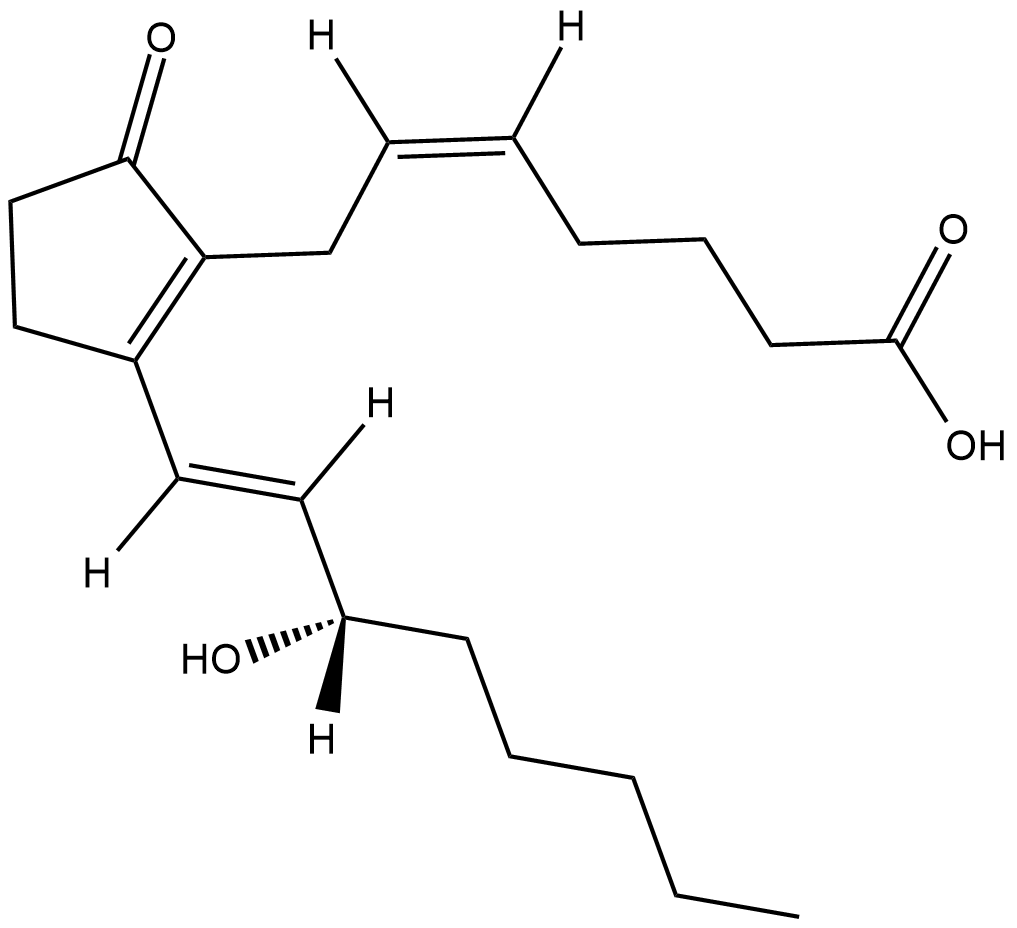
-
GC40766
Prostaglandin B3
Prostaglandin B3 (PGB3) is a non-enzymatic dehydration product resulting from the treatment of Prostaglandin E3 (PGE3) with strong base.
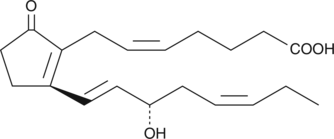
-
GC45551
Prostaglandin Bx

-
GC45770
Prostaglandin D Synthase (hematopoietic-type) Inhibitor F092
An inhibitor of hematopoietic-type PGDS

-
GC18999
Prostaglandin D1
Prostaglandin D1 (PGD1) is the theoretical D-series metabolite of DGLA, but to date it has not been isolated as a natural product.
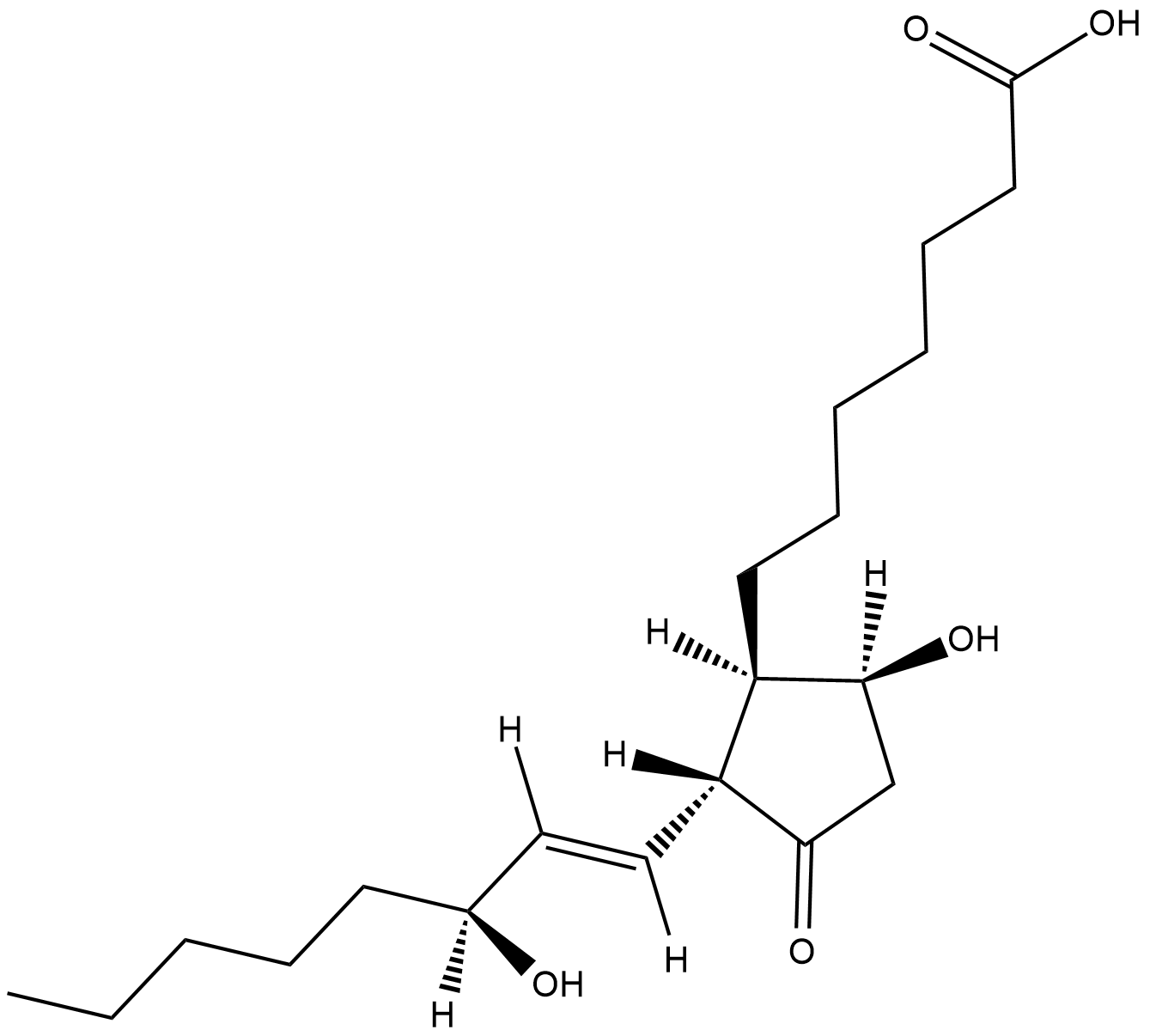
-
GC18878
Prostaglandin D1 Alcohol
Prostaglandin D1(PGD1) alcohol is the synthetic analog of PGD1 with a primary alcohol in place of the C-1 carboxyl.
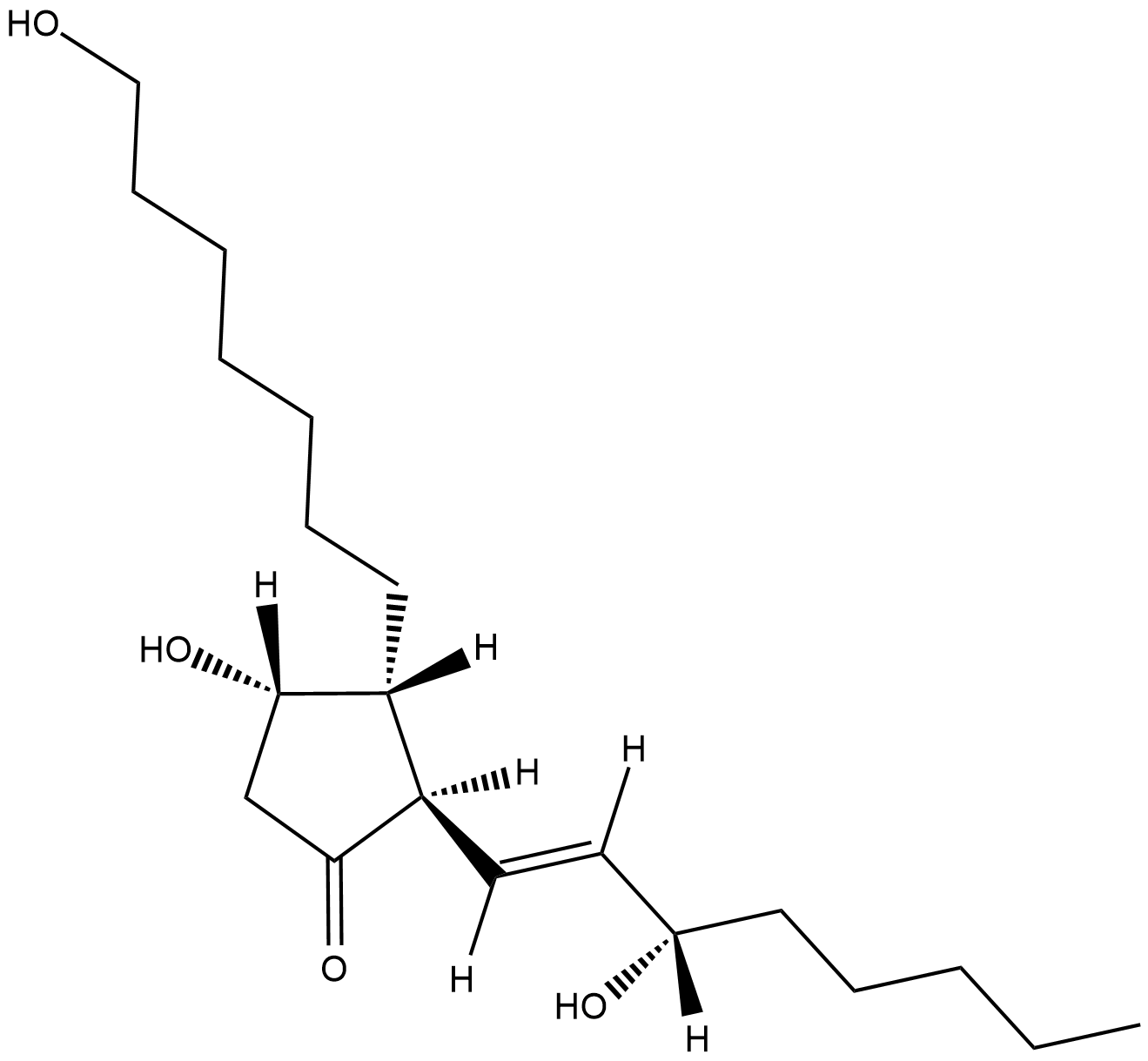
-
GC44707
Prostaglandin D2 Ethanolamide
Prostaglandin D2 ethanolamide (PGD2-EA) is a bioactive lipid produced by the sequential metabolism of anandamide (arachidonoyl ethanolamide) by cyclooxygenase (COX) enzymes, in particular by COX-2, and PGD synthase.

-
GC41170
Prostaglandin D2 methyl ester
Prostaglandin D2 (PGD2) is the major eicosanoid product of mast cells and is produced in large quantities by hematopoietic PGD synthase during allergic and asthmatic anaphylaxis.

-
GC44709
Prostaglandin D2 serinol amide
2-Arachidonyl glycerol (2-AG) exhibits cannabinoid (CB) agonist activity at the CB1 receptor, is an important endogenous monoglyceride species, and is thus considered to be the natural ligand for the CB1 receptor.

-
GC44710
Prostaglandin D2-1-glyceryl ester
2-Arachidonoyl glycerol has been isolated from porcine brain, and has been characterized as the natural endocannabinoid ligand for the CB1 receptor.

-
GC47988
Prostaglandin D2-d4
An internal standard for the quantification of prostaglandin D2
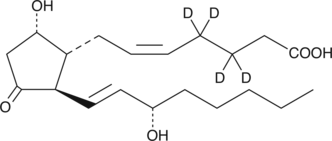
-
GC40610
Prostaglandin D3
Prostaglandin D3 (PGD3) is produced by the metabolism of EPA via the COX pathway.

-
GC18740
Prostaglandin E1 Alcohol
Prostaglandin E1 (PGE1) alcohol is a non-irritant bronchodilator, with relaxant activity on the human bronchial muscle in vitro, comparable to PGE1 at concentrations of 0.01 to 10.0 ug/ml.
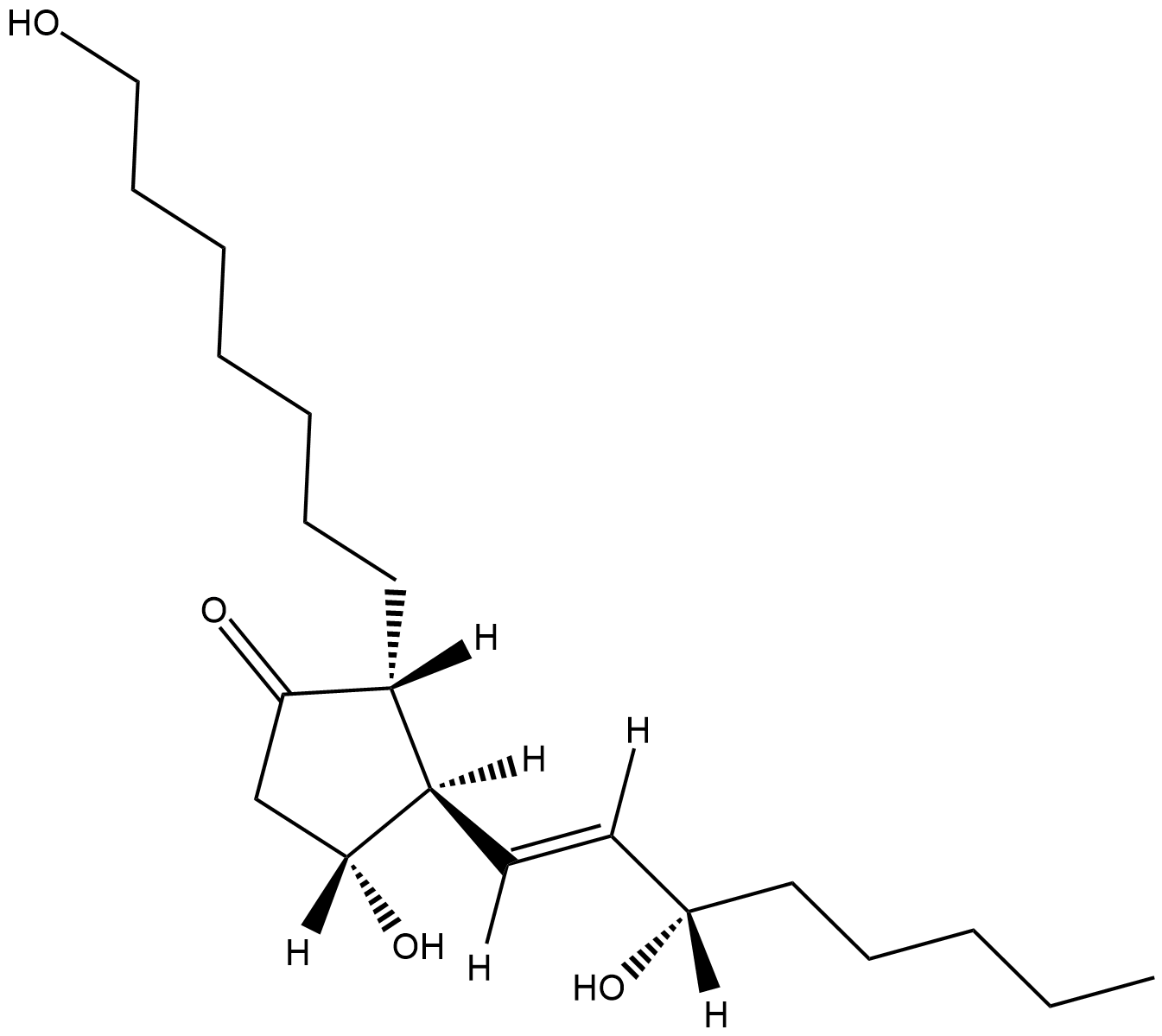
-
GC18738
Prostaglandin E1 Ethanolamide
Prostaglandin E1 ethanolamide (PGE1-EA) is the ethanolamine-amide analog of PGE1.
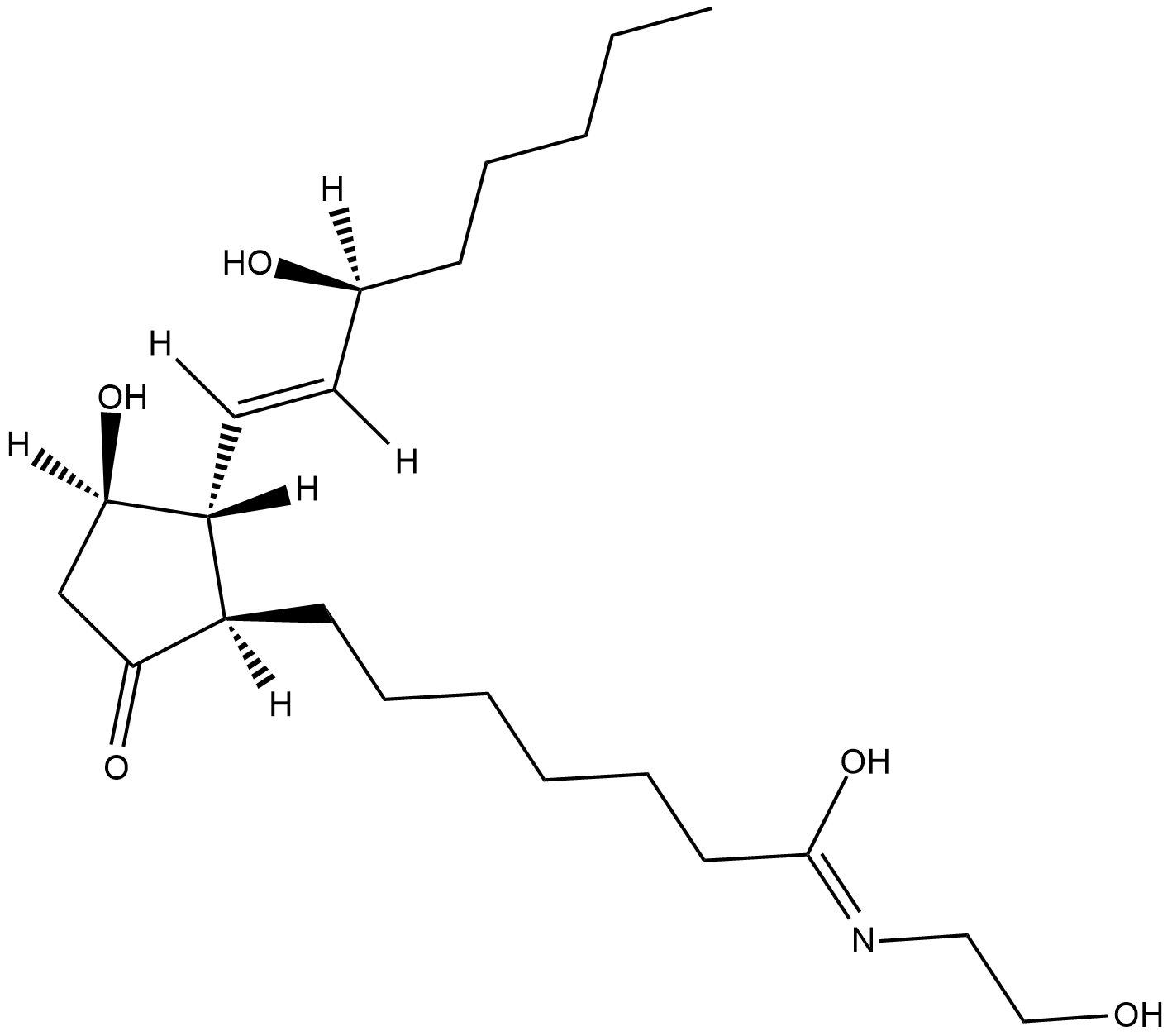
-
GC18768
Prostaglandin E1 ethyl ester
Prostaglandin E1 (PGE1) is the theoretical cyclooxygenase metabolite of dihomo-γ-linolenic acid.
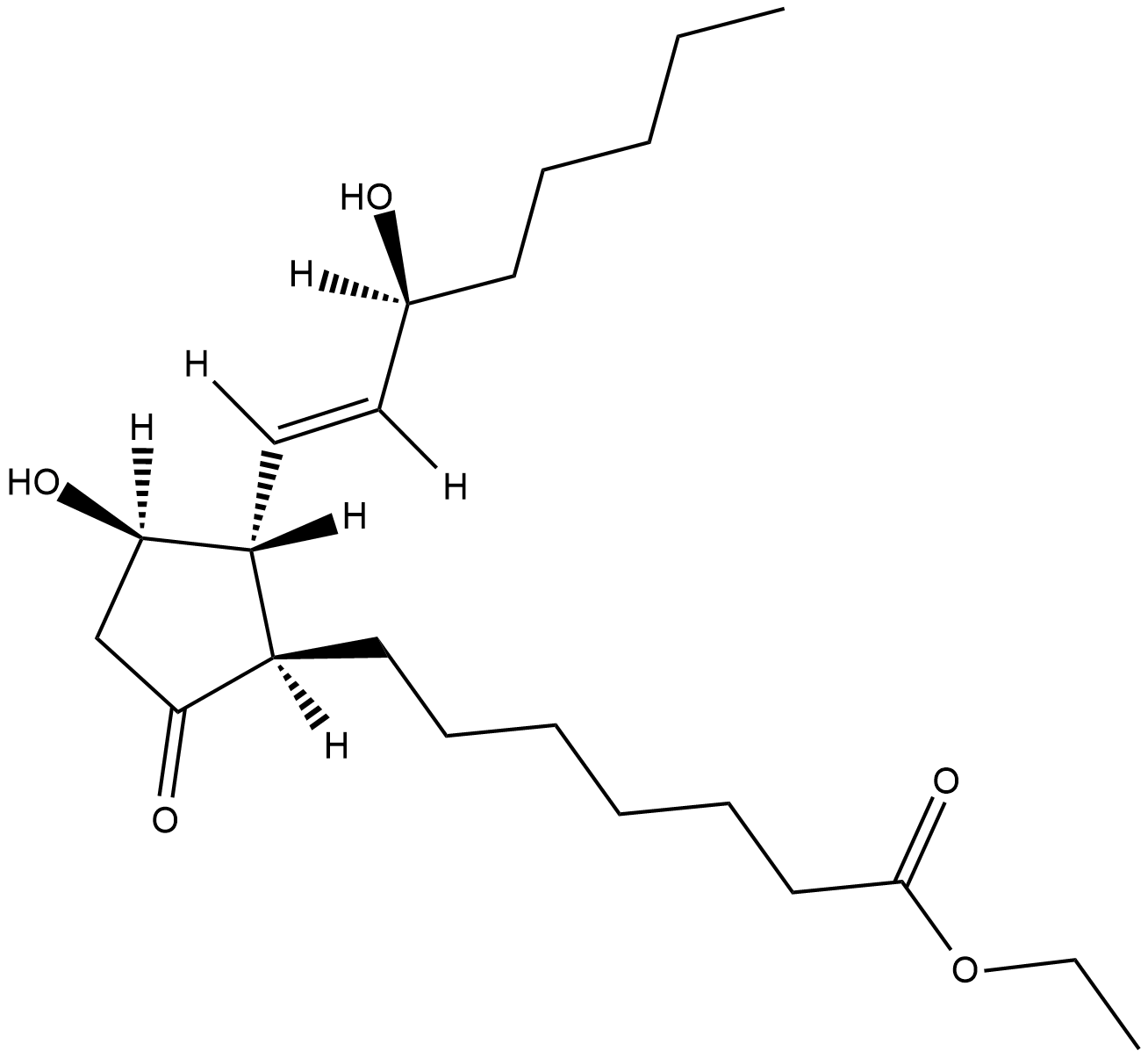
-
GC47990
Prostaglandin E1 isopropyl ester
An ester prodrug form of PGE1

-
GC47991
Prostaglandin E1-d4
An internal standard for the quantification of prostaglandin E1
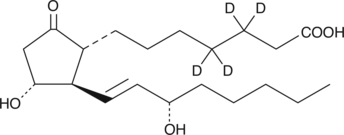
-
GC44712
Prostaglandin E2 Ethanolamide
Prostaglandin E2 ethanolamide (PGE2-EA) is an analog of PGE2 with improved water solubility and stability.

-
GC44714
Prostaglandin E2 isopropyl ester
Prostaglandin E2 (PGE2) isopropyl ester is a more lipophilic form of the free acid, PGE2.

-
GC41171
Prostaglandin E2 methyl ester
Prostaglandin E2 methyl ester (PGE2 methyl ester) is an analog of PGE2 with enhanced lipid solubility.

-
GC44715
Prostaglandin E2 p-acetamidophenyl ester
PGE2 p-acetamidophenyl ester is a crystalline derivative of PGE2.

-
GC44716
Prostaglandin E2 p-benzamidophenyl ester
PGE2 p-benzamidophenyl ester is a crystalline derivative of PGE2.
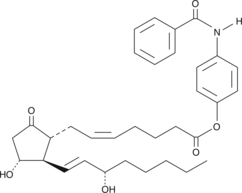
-
GC44717
Prostaglandin E2 serinol amide
2-Arachidonyl glycerol (2-AG) exhibits cannabinoid agonist activity at the CB1 receptor, is an important endogenous monoglyceride species, and is thus considered to be the natural ligand for the CB1 receptor.

-
GC44718
Prostaglandin E2-1-glyceryl ester
2-Arachidonoyl glycerol has been isolated from porcine brain, and has been characterized as the natural endocannabinoid ligand for the CB1 receptor.

-
GC47994
Prostaglandin E2-d4
An internal standard for the quantification of prostaglandin E2
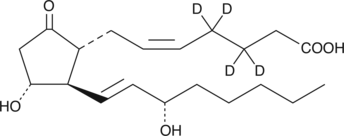
-
GC47996
Prostaglandin E2-d9
An internal standard for the quantification of PGE2

-
GC40611
Prostaglandin E3
Prostaglandin E3 (PGE3) is formed via the cyclooxygenase (COX) metabolism of eicosapentaenoic acid.
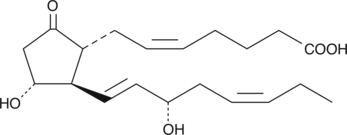
-
GC18665
Prostaglandin F1α
Prostaglandin F1α (PGF1α) is the putative metabolite of dihomo-γ-linolenic acid (DGLA) via the cyclooxygenase (COX) pathway.
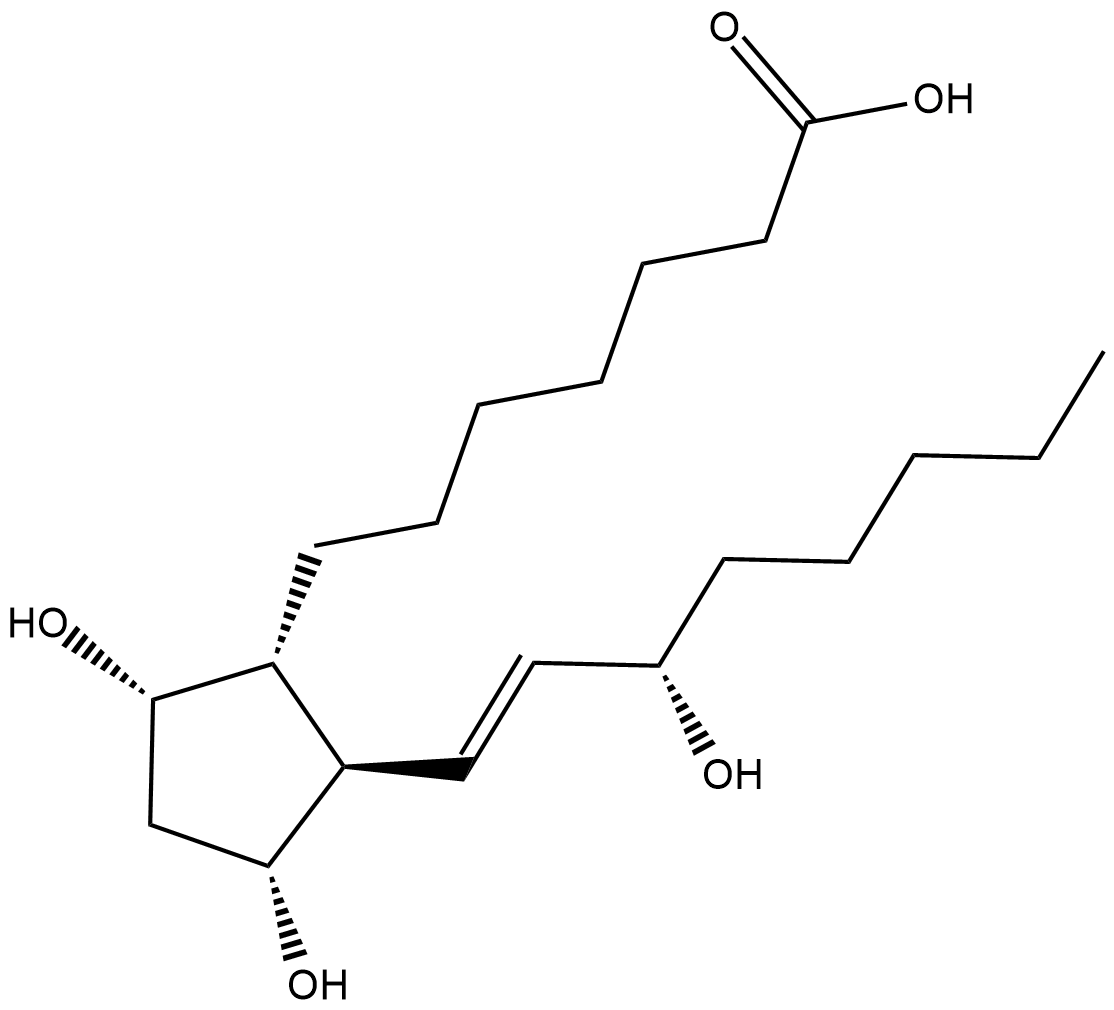
-
GC18920
Prostaglandin F1α Alcohol
Prostaglandin F1α (PGF1α) alcohol is an analog of PGF1α with a primary alcohol replacing the C-1 carboxyl group.
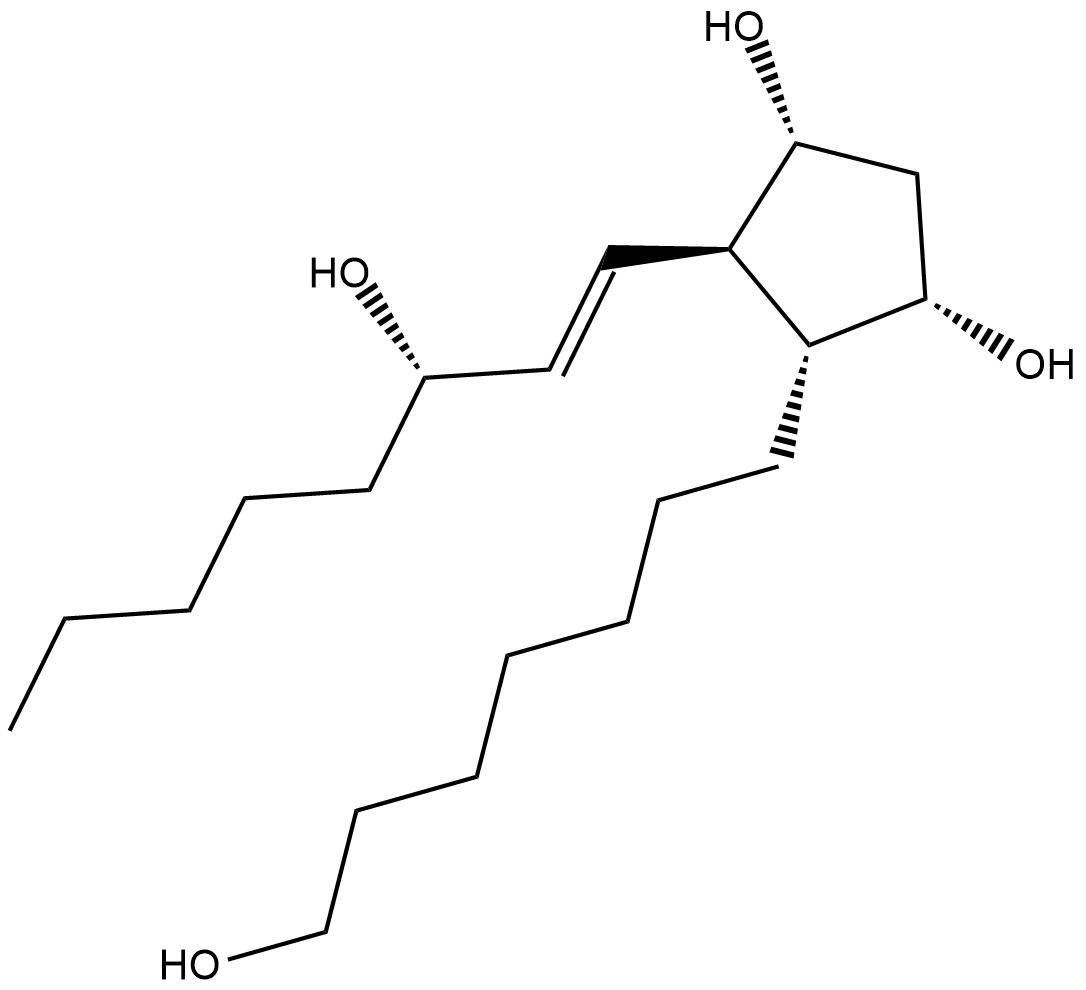
-
GC18865
Prostaglandin F1β
PGF1β is the C-9 epimer of PGF1α.
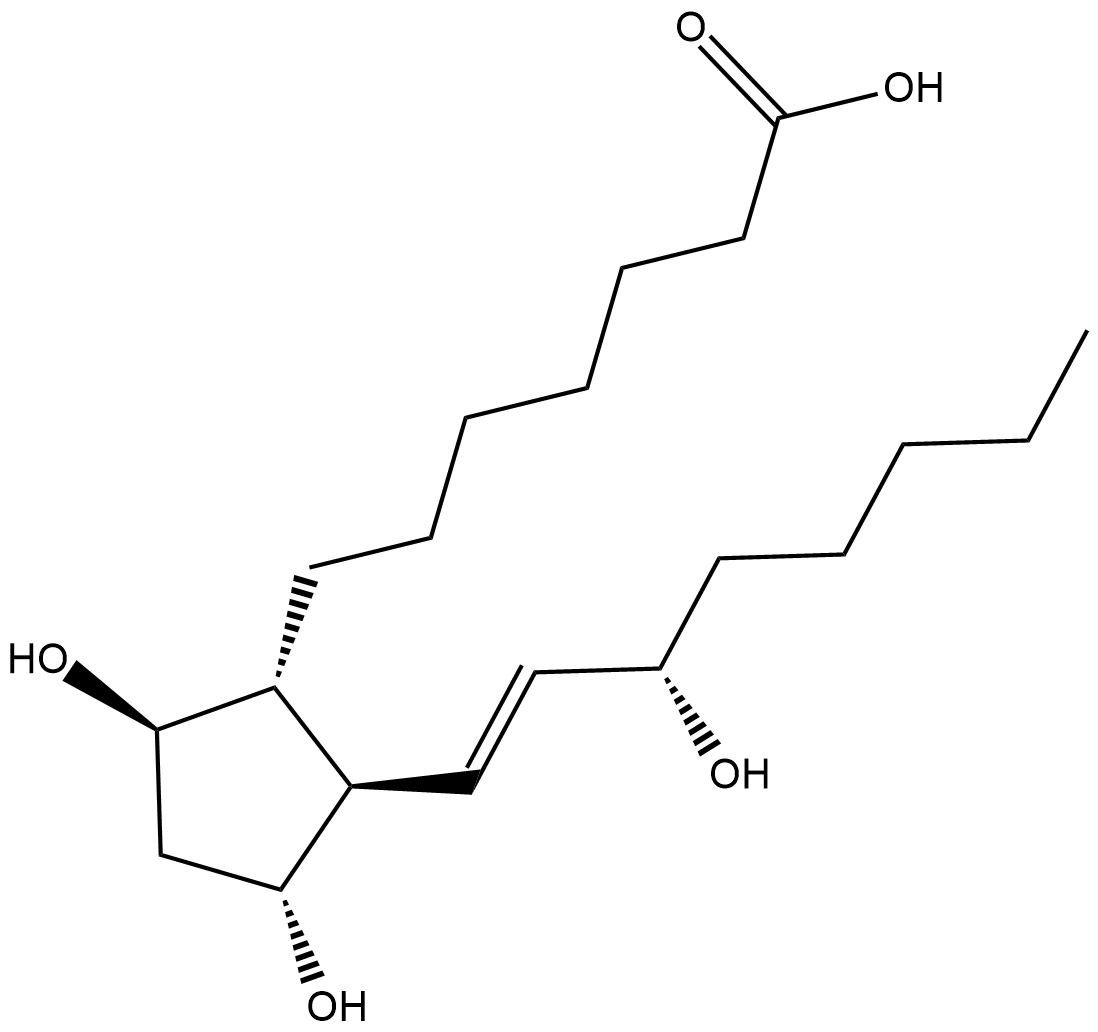
-
GC41140
Prostaglandin F2α 1,11-lactone
PGF2α 1,11-lactone is a lipid-soluble internal ester of PGF2α.

-
GC41141
Prostaglandin F2α 1,15-lactone
PGF2α 1,15-lactone is a lipid-soluble internal ester of PGF2α.

-
GC41142
Prostaglandin F2α 1,9-lactone
PGF2α 1,9-lactone is a lipid-soluble internal ester of PGF2α.
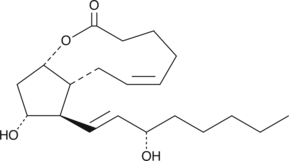
-
GC40401
Prostaglandin F2α Alcohol methyl ether
Prostaglandin F2α alcohol methyl ether (PGF2α-OMe) is an analog of PGF2α in which the C-1 carboxyl group has been replaced an O-methyl ether.
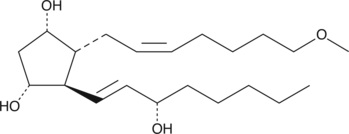
-
GC41407
Prostaglandin F2α Ethanolamide
Prostaglandin F2α ethanolamide (PGF2α-EA) is produced by COX-2 metabolism of the endogenous cannabinoid, arachidonoyl ethanolamide (AEA), found in brain, liver, and other mammalian tissues.



